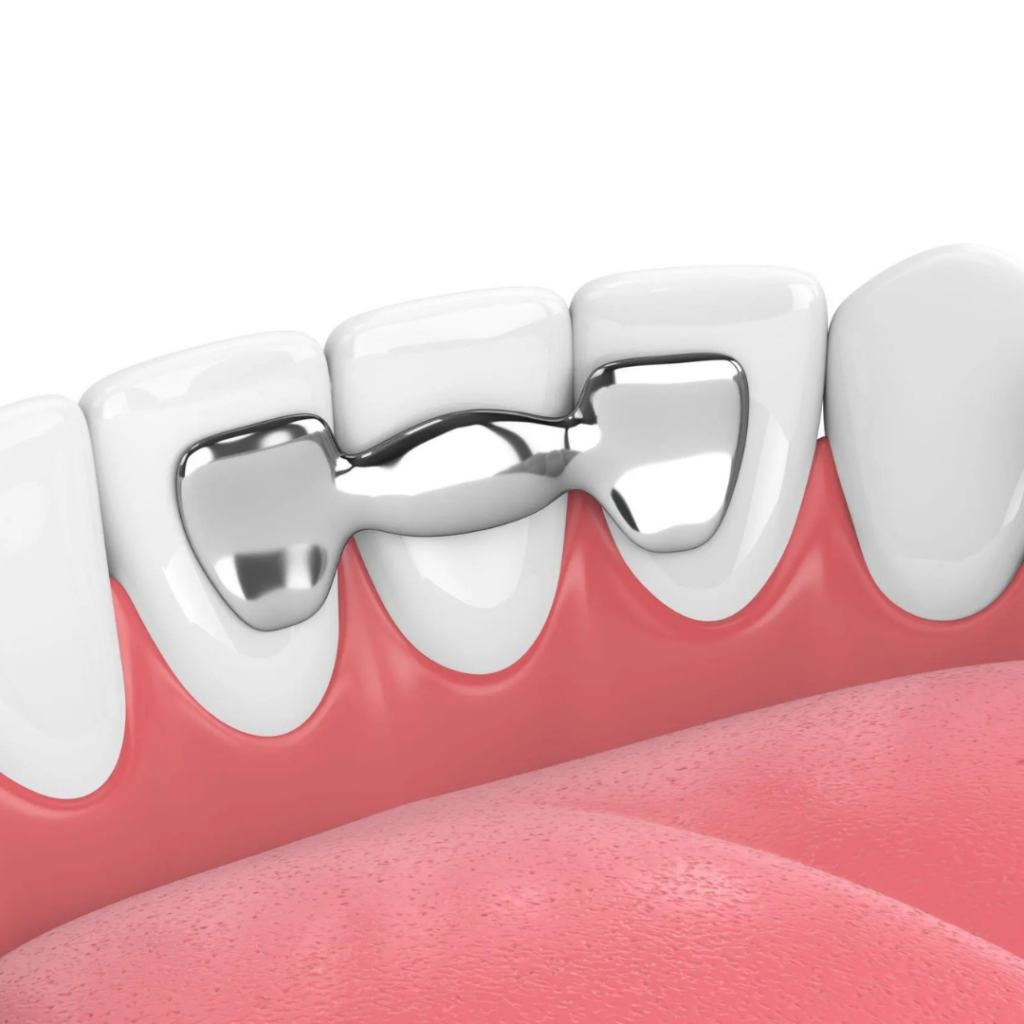Dental Bridge

Solution for Missing Teeth
What is a Dental Bridge?
A dental bridge is a prosthetic treatment method used to fill gaps caused by one or more missing teeth, essentially creating a “bridge” between teeth. This structure is supported by natural teeth or dental implants and consists of crowns placed on the teeth adjacent to the gap and artificial teeth in between. Dental bridges not only address aesthetic concerns but also restore chewing and speaking functions, improving daily quality of life. Additionally, they prevent neighboring teeth from shifting into the gap, maintaining the natural alignment of teeth.
How Is a Dental Bridge Prepared?
Dental bridge treatment requires thorough planning and a customized design process. In the first step, your dentist conducts a detailed examination of your oral health, takes impressions of your teeth, and plans the bridge design. Next, the teeth that will support the bridge are slightly reshaped to accommodate the crowns. After this procedure, impressions of your teeth’s new structure are taken, and a custom bridge is prepared in the laboratory. During this process, a temporary bridge is placed to protect sensitive teeth and ensure an aesthetic appearance. Once the permanent bridge is ready, your dentist carefully fits it, makes necessary adjustments, and permanently secures it in place.
Types of Dental Bridges
Dental bridges can be designed in different types based on the patient’s oral structure and needs:
Traditional Dental Bridge: The most commonly used type, supported by crowns placed on natural teeth or implants on either side of the gap.
Cantilever Bridge: Preferred when there is a supporting tooth on only one side of the gap, often suitable for back teeth.
Maryland Bonded Bridge: A less invasive option, attached to the back of adjacent teeth with a metal or porcelain framework, frequently used for front teeth.
Implant-Supported Bridge: Fixed using dental implants instead of natural teeth. This method offers a highly durable and stable solution for patients with sufficient bone support.
Each bridge type is selected based on the patient’s oral health, bone structure, and aesthetic expectations.
Advantages of Dental Bridges
Dental bridges offer numerous benefits for addressing problems caused by missing teeth:
Restores Functionality: Missing teeth can make basic functions like chewing and speaking difficult. A dental bridge restores these functions, enhancing your quality of life.
Improves Aesthetics: Filling gaps makes your smile look more natural and attractive.
Prevents Teeth Shifting: Missing teeth can cause neighboring teeth to shift. A bridge helps maintain proper tooth alignment.
Quick and Effective Solution: Compared to dental implants, bridges can be applied in a shorter time and are a less invasive treatment option.
Regain Your Smile!
A dental bridge eliminates the physical and aesthetic issues caused by missing teeth, helping you regain your smile. DentClub’s expert dentists create a personalized treatment plan to determine the most suitable bridge option for you. Take the first step toward a healthy and beautiful smile by booking an appointment!
Remember, missing teeth are not just an aesthetic issue but also a serious condition affecting your oral health. With a dental bridge, you can restore both your health and your smile!
#F.A.Q.

